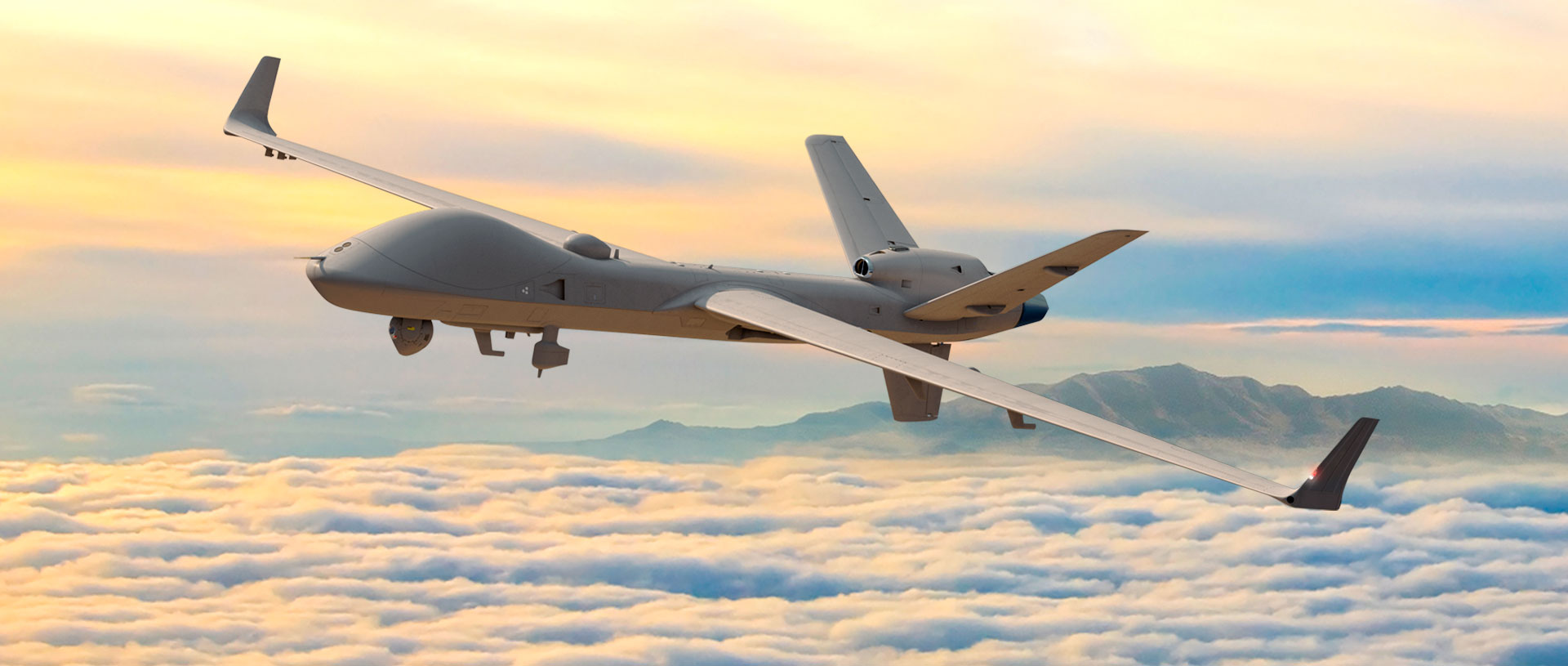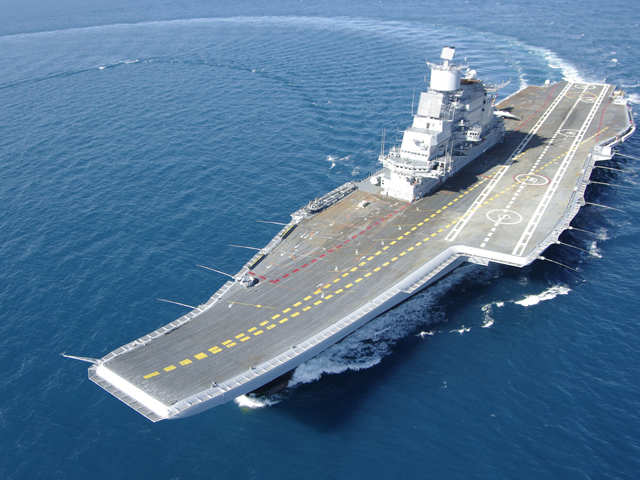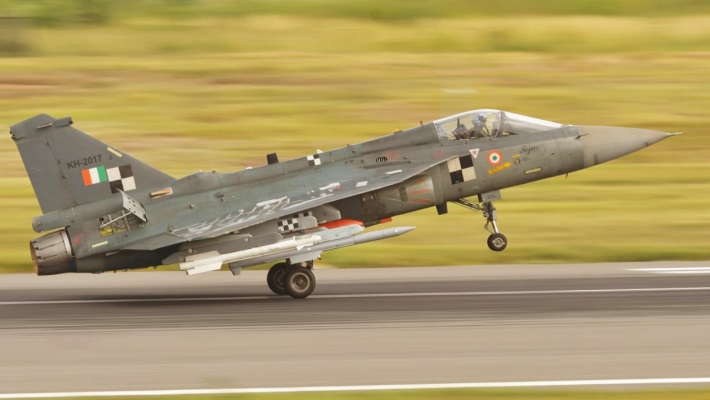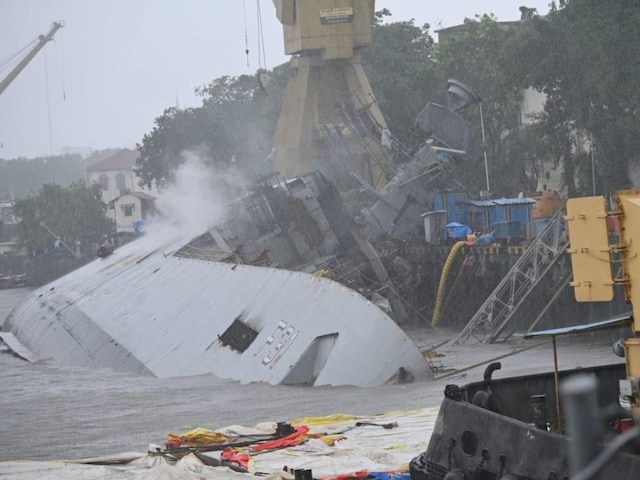Idrw Team
SOURCE: IDRW.ORG TEAM

India is inching closer to acquiring 31 MQ-9B High Altitude Long Endurance (HALE) Unmanned Aerial Vehicles (UAVs) from the United States. The Defence Acquisition Council (DAC), chaired by Defence Minister Rajnath Singh approved amendments to the deal with General Atomics.
These amendments, according to a defence source, are within the scope of the initial agreement and primarily focus on increasing indigenous content. The US has already completed its formalities, including delivering the Letter of Offer and Acceptance to India in early March. India is now in the final stages of the procurement process before the deal is signed by the Cabinet Committee on Security.
Continue readingSOURCE: IDRW.ORG TEAM
.jpg)
Bharat Earth Movers Limited (BEML) is undergoing a strategic transformation, with a focus on expanding its footprint in the naval, maritime, aerospace, and tank engine sectors.
In a recent statement, the company revealed that it has established dedicated business units for each of these domains over the past six to eight months. BEML envisions these units contributing a substantial 8-10% of the company’s overall revenue in the coming years.
Continue readingSOURCE: IDRW.ORG TEAM

Flying Wedge Defence and Aerospace, the Bengaluru-based startup, has achieved a significant milestone in the development of its indigenous military-grade bomber UAV, the FWD-200B. The company has successfully completed both low and high-speed taxi trials of the aircraft at the DRDO Aeronautical Test Range in Chitradurga. This brings the UAV closer to its maiden flight, which is expected to take place soon.
Earlier this year, in March, the company unveiled a scaled mock-up of the FWD-200B, which drew attention for its peculiar round-shaped design fuselage and extremely small landing gears . However, this initial model was a cardboard mockup. The UAV is now in its physical form and has undergone ground testing to assess its performance and systems before taking to the skies.
Continue readingSOURCE: IDRW.ORG TEAM

On Monday, the Defence Acquisition Council (DAC), chaired by Defence Minister Rajnath Singh, granted approval for the scheduled refit of the aircraft carrier INS Vikramaditya, set to occur later this year.
The refit aims to maintain and enhance the operational capabilities of the INS Vikramaditya, a vital component of the Indian Navy. This initiative reflects the government’s ongoing commitment to sustaining a powerful and modern naval fleet. The refit will involve extensive maintenance and updates to the carrier’s systems and technology.
Continue readingSOURCE: IDRW.ORG TEAM
In a significant development, Brazil has expressed keen interest in acquiring India’s indigenously developed Akash missile system. Brazilian Delegation already has witnessed live Demonstration of the India’s Akash Missile System in India and soon it will be asking India to send Financial bid for India’s Akash Missile System.
This comes on the heels of India’s successful export of the Akash to Armenia in a substantial ?6,000 crore deal. The Akash, a surface-to-air missile system, has garnered global attention for its advanced capabilities and proven effectiveness. Its ability to intercept multiple aerial targets simultaneously has made it a sought-after defense asset.
Continue readingSOURCE: IDRW.ORG TEAM

Israel Aerospace Industries (IAI) is keen on expanding its footprint in India by establishing a passenger-to-freighter (P2F) conversion facility and an engine maintenance, repair, and overhaul (MRO) center. The company is in advanced discussions with Hindustan Aeronautics Limited (HAL) and another undisclosed Indian firm to set up the P2F conversion facility within the next two years.
IAI envisions India as a strategic location for these operations due to the burgeoning demand for air cargo services globally. The company highlights the potential of converting wide-body aircraft like the Boeing 777 into freighters, which can carry up to 100 tons of cargo. This capacity surpasses the current limitations of twin-engine wide-body freighters, which typically handle around 60 tons.
Continue readingSOURCE: IDRW.ORG TEAM
)
The first delivery of the indigenous Tejas Mk1A fighter jet to the Indian Air Force (IAF) has been delayed due to extensive software upgrades and testing requirements. Sources close to idrw.org, revealed that the IAF requested early onboard testing of the upgraded software, originally planned for a later stage. This, combined with the final software testing and planned ordnance delivery tests, has pushed back the delivery by several months.
When queried about reported issues with the ELTS’s ELM-2052 Active Electronically Scanned Array (AESA) radar and Electronic Warfare (EW) system, sources assured idrw.org that the concerns were minor. They are being addressed through software improvements and optimizations of the Digital Flight Control Computer (DFCC) and related software, rather than any hardware or backend process issues.
Continue readingSOURCE: IDRW.ORG TEAM

In a significant development in South Asian defense dynamics, Pakistan’s plans to acquire Chinese stealth fighter jets, potentially the FC-31, have raised questions about regional military balances. However, a senior Indian Air Force (IAF) officer, speaking on the condition of anonymity to idrw.org, asserted that this move would not force India to alter its own plans for procuring domestically made fighter jets.
Earlier this year, the Chief of the Pakistan Air Force (PAF) revealed intentions to acquire fifth-generation fighter jets from either China or Turkey. This acquisition is part of a strategy to modernize the PAF by replacing its aging fleet of F-16s. The potential procurement of advanced stealth fighters like the Chinese FC-31 represents Pakistan’s commitment to bolstering its air capabilities amidst regional security challenges.
Continue readingSOURCE: IDRW.ORG TEAM

The Indian Navy is facing a major setback with the severe listing of the frigate INS Brahmaputra. The warship, undergoing a refit at the Naval Dockyard in Mumbai, capsized to a dangerous angle of 40-45 degrees on its port side following a fire on board.
While the extent of damage is currently being assessed, officials have confirmed that the situation is not as severe as the previous incident involving INS Betwa. Nevertheless, the process of righting the ship is expected to be a lengthy one, potentially taking up to three months, subject to necessary approvals.
Continue readingSOURCE: IDRW.ORG TEAM

Svaayatt Industries has made a significant breakthrough in drone technology with the launch of its “SMV-1” PetroCoptor, a cutting-edge unmanned aerial vehicle (UAV) designed for a wide range of applications. This innovative drone is equipped with advanced surveillance payloads, including EO-IR & LRF Triple sensor camera, RGB day camera, and a mapping payload, making it a versatile tool for industries such as oil and gas, security, and surveying.
One of the standout features of the PetroCoptor is its integration of LiDAR technology, enabling precise mapping and surveying with unparalleled accuracy. The drone’s modular design allows for easy assembly and customization, while its robust construction ensures durability in challenging environments.
Continue readingSOURCE: IDRW.ORG TEAM

NewSpace Research and Technologies has ignited speculation in the defense and aerospace industry with the recent release of intriguing images showcasing an upcoming UAV. The company, known for its innovative approach to aerospace technology, has labeled the project as “Coming Soon,” building anticipation for the unveiling of this groundbreaking platform.
The images offer a glimpse into a hybrid UAV design that combines the versatility of a Hexacopter with the lethal capabilities of air-launched Mini Loitering Munitions. This unique configuration suggests a system capable of both aerial surveillance and precision strike missions, potentially revolutionizing tactical operations.
Continue readingSOURCE: IDRW.ORG TEAM

The Defence Research and Development Organisation (DRDO) is actively developing a Universal Launcher AD (ULAD) system to enhance the operational flexibility of India’s Ballistic Missile Defence (BMD) system. The ULAD will allow the Indian military to deploy both Phase 1 and Phase 2 interceptor missiles from the same launcher, eliminating the need for separate launch platforms.
India’s BMD system is a multi-layered defence shield designed to intercept incoming ballistic missiles at different altitudes. Phase 1 comprises the Prithvi Air Defence (PAD) missile for high altitudes (50-80 km) and the Advanced Air Defence (AAD) missile for lower altitudes (15-30 km).
Continue readingSOURCE: IDRW.ORG TEAM
In a significant development aimed at bolstering India’s strategic deterrence capabilities, the BrahMos Aerospace has initiated work on an extended-range version of its air-launched cruise missile (ALCM). The new missile, an evolution of the existing BrahMos-A, is set to boast a formidable range of 800 kilometers, significantly enhancing the Indian Air Force’s (IAF) strike capabilities.
Currently armed with the 450km range BrahMos-A, the IAF’s Sukhoi-30MKI fleet is poised to become even more potent with the integration of the extended-range variant. To accommodate the heavier payload, the Sukhoi-30MKI will undergo structural enhancements, primarily focusing on reinforcing the mid and rear fuselage sections. Hindustan Aeronautics Limited (HAL) is entrusted with this critical modification to ensure the aircraft can safely carry the 2.5-ton missile.
Continue readingSOURCE: IDRW.ORG TEAM
India’s state-owned Hindustan Aeronautics Limited (HAL) was reportedly aware of potential supply chain challenges faced by GE Aerospace regarding the F-404 engine for the Tejas Mk1A fighter program, according to sources close to idrw.org.
These sources claim that GE informed HAL of these difficulties at the time the contract for 99 F-404 engines was signed in 2021. The concerns stemmed from global supply chain disruptions related to obtaining specialized alloys in the post-pandemic world.
Continue readingSOURCE: IDRW.ORG TEAM

The Defence Research and Development Organisation (DRDO) is actively working on bolstering the protection capabilities of the indigenously developed Zorawar light tank. As the Indian Army expresses a desire for increased armor and the integration of an Active Protection System (APS), the DRDO is facing the challenge of balancing enhanced protection with the tank’s core design principles of lightness and mobility.
The Zorawar, designed for high-altitude operations, is intended to be a nimble and rapidly deployable asset. However, the Indian Army’s demand for heavier armor could significantly impact the tank’s weight, potentially compromising its mobility and strategic advantages.
Continue reading